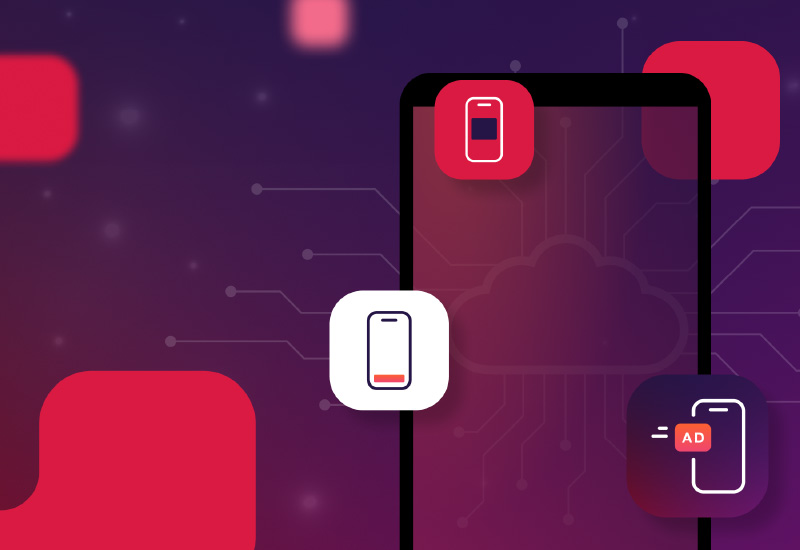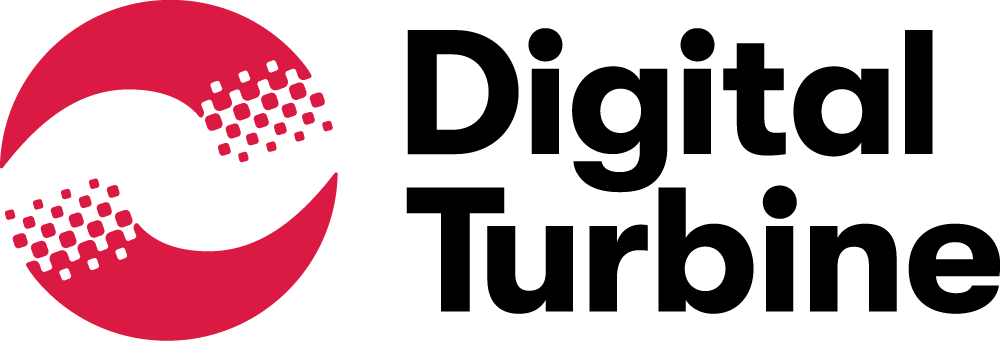Global credit bureau Equifax adopted Gemini to enhance productivity while strengthening its security posture.
/ Learn moreDigital Turbine completes successful cloud migration in collaboration with SADA

/ AT A GLANCE
In moving their mobile device monetization platform to Google Cloud, Digital Turbine reached price parity/cost consistency with SADA’s help.

INDUSTRY Cloud Natives
REACHED Price parity with AWS
ACHIEVED Better cost predictability

Smartphones have revolutionized the world and how we work and play. From iPhones to Android mobile devices, users worldwide can barely imagine life without them. Other groups that cannot do without smartphones are mobile-centric brands, developers, and telecom providers. An entire ecosystem has developed to help them reach users. Digital Turbine stands out as a leader in the ecosystem.
Digital Turbine offers solutions to accelerate mobile growth, monetization, and consumer engagement for app developers, brands, and telecoms. The company’s end-to-end platform uniquely simplifies their partners’ ability to supercharge awareness, acquisition, and monetization in the mobile ecosystem—connecting them with more consumers, in more ways, across more devices.
Business challenge
Digital Turbine (DT) has seen inorganic growth over the past several years with three large acquisitions and products at scale. These products and the deployment in the cloud looked very different, as there wasn’t a unifying theme that tied together core elements such as technology stacks or automation. DT viewed a large-scale cloud migration as an opportunity to unify deployment patterns and build consistency across the different products.
“With multiple acquisitions over the years, the company ended up with workloads in both AWS and Google Cloud,” says Charles White, Director of DevOps at Digital Turbine. “The intent was to consolidate our platforms to get a stronger single singularity structure across business units, making sure everyone is operating on the same technology stacks to the extent possible, and giving us a chance to redesign and rebuild to enable scale.”
Consolidating onto Google Cloud
Once the decision had been made to consolidate Digital Turbine’s operations onto one platform, choosing the right partner that would provide optimal efficiency, ease of migration, and cost effectiveness was the next challenge.
With presences on both platforms, the evaluation concluded Google Cloud was the right partner. Then the migration process kicked off.
Solution
After choosing Google Cloud to host their platform/products, Digital Turbine needed a solution provider that could deliver the Google Cloud expertise to collaborate on the transition and do it at DT scale. The company leveraged an existing relationship with SADA, An Insight company, taking advantage of SADA’s experience as a multiple-time Google Cloud Partner of the Year.
SADA has the knowledge and know-how and understood how to lay out and structure the migration for a smooth transition. In collaboration with the SADA team, we were able to support the migration we wanted.
Charles White | Director of DevOps at Digital Turbine
Teaming up for program governance
One of the major insights for a migration of this scale was that a methodology of program governance would be necessary to coordinate all the moving parts. The answer was to build a hybrid team composed of members from both companies that would establish timelines and milestones for the migration.
“We had folks from SADA and Digital Turbine collaborating,” says Pranitha Makam, Senior Technical Project Manager at Digital Turbine. “It was a program team, spanning multiple business units, collectively working with the Digital Turbine technology leads and their SADA program management counterparts assigned to those business units to come up with the planning phase. Together, they drew out the architecture of how it should look and laid out the key milestones. Then, working with the team involved from both sides, they set up goals and followed up over time to understand how we were tracking against those milestones.”
Also, a monthly executive steering committee meeting was set up, convening throughout the project discovery and inventory, identifying technical gaps/debt, legal and compliance needs, technical design, and prioritization of tasks on the timeline.
Splitting the difference among business units
The hybrid planning group split the migration activities along business unit lines, with different team members assigned to handle the migration planning and milestones.
“Different business units have different requirements so each business unit handled the migration differently,” says Makam. “Some required more SADA hands-on collaboration while others were driven internally by the DT tech leads.” What proved successful with the business unit approach was the ability to have different teams at SADA focus on different needs, priorities, and geographical constraints—ensuring a maximized outcome with the resources at hand.
Tracking consumption and migration timelines with FinOps
Another important aspect of Digital Turbine migration program management was their ability to track consumption. To track the consumption of cloud resources on both AWS and Google Cloud, the SADA FinOps team set up dashboards that would enable Digital Turbine to optimize spend and monitor the project on-the-fly.
“As we’re moving from AWS to Google Cloud, we have certain goals we need to hit in terms of timelines and milestones,” says Kathy Tan, Manager of Financial Planning and Analysis (FP&A) at Digital Turbine. “The collaboration, transparency, and data-driven approach SADA provided aided us in navigating the migration successfully, hitting our goals across the board.”
Building Looker dashboards for daily progress
With Digital Turbine’s engineering team focused on migrating the data and infrastructure, SADA’s team supported the effort with their custom Looker dashboards—enabling the monitoring of progress at-a-glance.
The SADA FinOps team helped Digital Turbine track cloud consumption and timelines for this large project, ensuring focus on the core tasks and providing peace of mind for Digital Turbine.
Impact
Meeting goals with a smooth transition to Google Cloud
In collaboration with SADA, Digital Turbine completed a successful, timely migration from AWS to Google Cloud. The complex, multi-pronged initiative included planning, preparation, and migration and was complete in the timeframe set by the companies.
Upon completion, Digital Turbine has been able to accomplish two of their primary goals: maintaining a similar overall price structure and setting up the ability to forecast costs moving forward.
Careful architecture work by the teams from SADA and DT enabled us to achieve price parity—with costs coming in as expected.
Kathy Tan | Manager of Financial Planning and Analysis (FP&A) at Digital Turbine
Migrating to a more consistent state of operation
Digital Turbine’s previous AWS setup involved multiple Kubernetes instances and was operationally complex to manage. Working with the SADA team, a migration to Google Cloud and Google Kubernetes Engine (GKE) helped achieve a more efficient, unified stack.
“We were able to migrate into a more consistent state,” says White. “On AWS, we were running a hybrid model where we had self-managed Kubernetes, managed Kubernetes, and EC2 instances. When we moved to Google Cloud, we migrated all our Kubernetes instances into GKE, so now we have a lot more consistency around our architecture design and the overall environment.”
Replacing DynamoDB with drop-in compatible ScyllaDB
Additionally, when Digital Turbine migrated from AWS, they had to find a replacement for the AWS proprietary database DynamoDB. Wishing to find a drop-in replacement solution and needing to act fast, DT decided on a Google Cloud and SADA-vetted ecosystem partner, ScyllaDB, to manage their DynamoDB compatibility.
“There were services and software inside AWS like DynamoDB, which we couldn’t transition because DynamoDB is an AWS service,” says White. “It would’ve required code updates to move, so we moved to ScyllaDB instead. Given the time constraints and requirements for the database migrations, ScyllaDB had a DynamoDB-compatible API that made it work for us, so we didn’t really need to do many code changes to be able to support that out the gate.”
Overall, by working with SADA on their migration, Digital Turbine was able to:
- Reach price parity on Google Cloud after leaving AWS
- Achieve a more predictable cost structure
- Move over 500 databases containing more than 38 terabytes
- Minimize downtime to near-zero with zero revenue loss
- Set up a common Kubernetes infrastructure that enables better management of resources when they need to scale or ramp down
- Improve security and compliance by applying org-level policies and implementing a role-based model for IAM permissions
- Design and implement a robust, secure network with isolated projects and control over traffic flow
- Consolidate all DT divisions and acquired companies under one Google Cloud org
The SADA program management team showed grit and determination in terms of adapting to situations and Digital Turbine’s specific needs. It was a very good gesture on SADA’s part to extend and become one unit to work toward Digital Turbine’s migration goals.
— Pranitha Makam | Senior Technical Project Manager at Digital Turbine
More customer stories
What we're up to
Solve not just for today but for what's next.
We'll help you harness the immense power of Google Cloud to solve your business challenge and transform the way you work.

